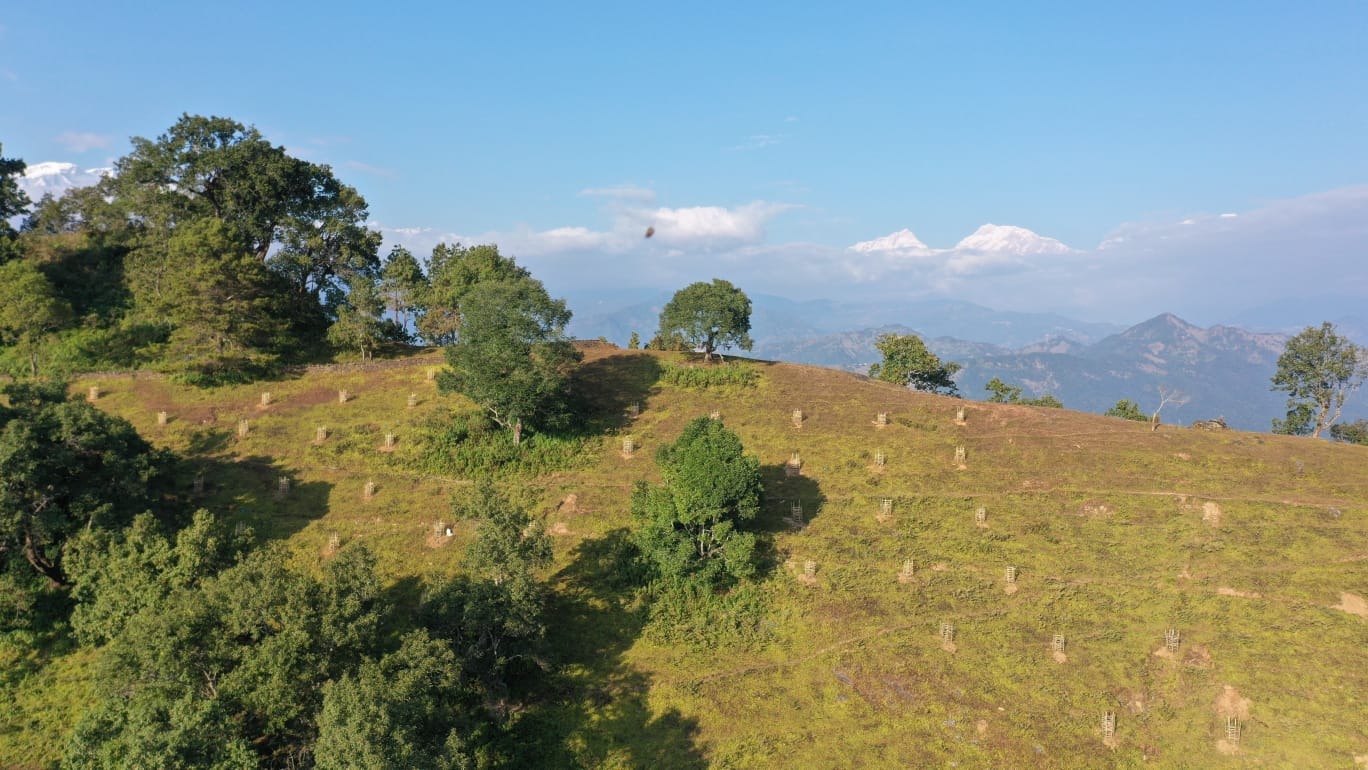Reforesting Barren Land: An Interview with FECOFUN

As part of its reforestation activities within the “Rain Communities” project in Nepal, IRHA is working closely with the Federation of Community Forestry Users Nepal (FECOFUN), which units together 22’300 Community Forestry Users Groups. To better understand FECOFUN’s activities in Nepal, Nirmal Adhikari (NA) – Project Manager at Kanchan Nepal - interviewed Kalidas Subedi (KS), the Provincial Chairperson of FECOFUN for Gandaki Province.
NA: Who is FECOFUN?
KS: The Federation of Community Forestry Users Nepal (FECOFUN) is an organization working in favour of community forests. My specific role in this organisation is to lead the FECOFUN activities in a coordinated way among the Forest User Groups from different districts within Gandaki province.
NA: What is the influence of FECOFUN in policy making?
KS: FECOFUN plays a decisive role in policy making on natural resources management. As a matter of fact, FECOFUN has contributed to the publication of the Forest Act 2076, Forest Development 2071 and Forest Development Master Plan. It is the focal organization in the formulation of such policies.
NA: How do you involve local communities in your activities?
KS: Forest Users Groups are the main pillars for FECOFUN. Based on the accessibility, interest and willingness of the community, District Forest Office decides on specific forest areas to be declared as Community Forest and helps in the formulation of Forest Legislation and Action Plan. Such Community Forests become the institutional members of FECOFUN, starting their relations with FECOFUN in different activities. FECOFUN participates in all the activities of Community Forests; institutional good governance, capacity building for sustainable forest management, livelihood improvement of disadvantaged groups, forest rights related campaigns, Forest User Groups meetings, workshops and trainings, etc.
NA: What are the specificities of Nepalese forests in comparison to European forest?
KS: Nepalese forests are specific in their community based management. Indeed, forest management’s rights are owned by the community, which is in charge of preparing legislation and action plans. Funds are allocated to the community for forest conservation and infrastructural development, while 25% of the funds are used for the upliftment of disadvantaged groups.
NA: Which are the major issues faced by forest users’ committees?
KS: There is a need for improvement in institutional as well as member's capacity, especially for female members. Technical knowledge is lacking among members of the committee, as the technical resources allocated by the government are limited, which sometimes results in poor management. Due to lack of knowledge and resources in Agroforestry, such knowledge and skills have not been implemented in community forest. Social inclusion is an issue faced by the committee, some disadvantaged group members are still not able to participate in all the activities of the committee on a regular basis.
NA: What are your techniques and methods to manage forests?
KS: Community forest management follows the principles of sustainable forest management, based on scientific methods and 10 years’ management plans. When implementing these plans, various activities are carried out such as clearing bushes, cutting and trimming in existing forests from Mid-October to Mid-January. Afforestation is carried out only in forests with low tree cover during the monsoon (Mid-July). Plantation is done in open and barren lands with proper plant protection and management. Plants are selected based on the soil type and its suitability to the local environment.
NA: What are your advices to run a successful reforestation campaign?
KS: During a reforestation campaign, good practices must be followed such as building community capacity, focusing on livelihood improvement, fulfilling community rights, prioritizing local indigenous knowledge, conserving local arts, culture and traditions while preparing Forest Legislation and Action Plan. Gender, social inclusion and good governance must also be taken into consideration.
NA: How do you perceive the link between water, soil and trees?
KS: Human life is so dependent on water, soil and forest that it cannot exist without these resources. These resources have innumerable benefits and important role in human’s life. Hence, these resources should be well utilized and properly conserved.